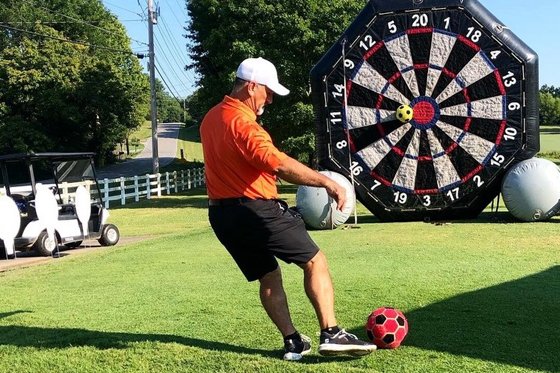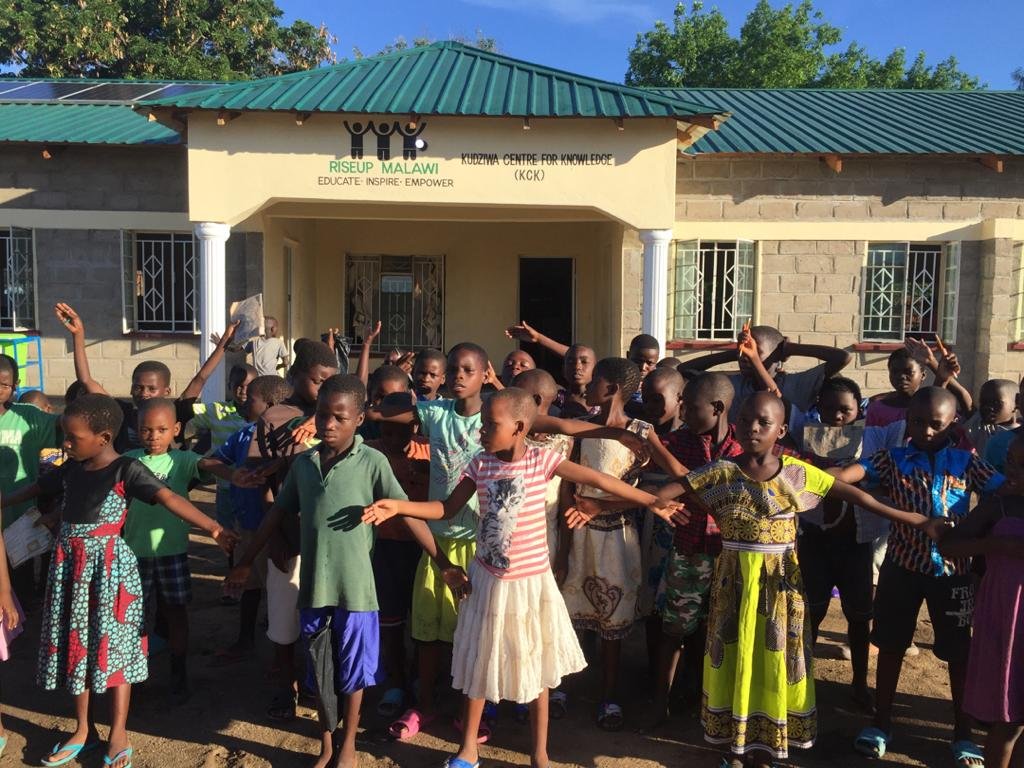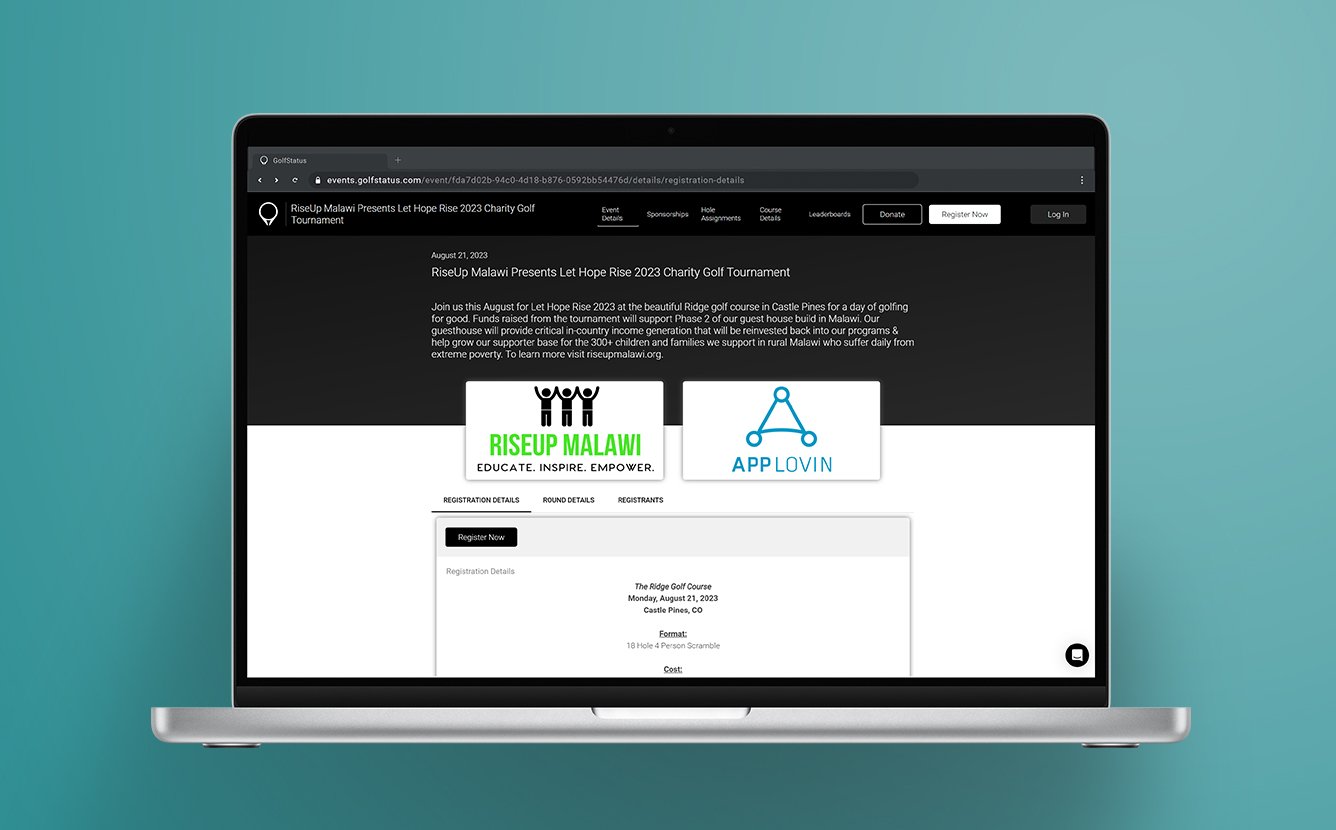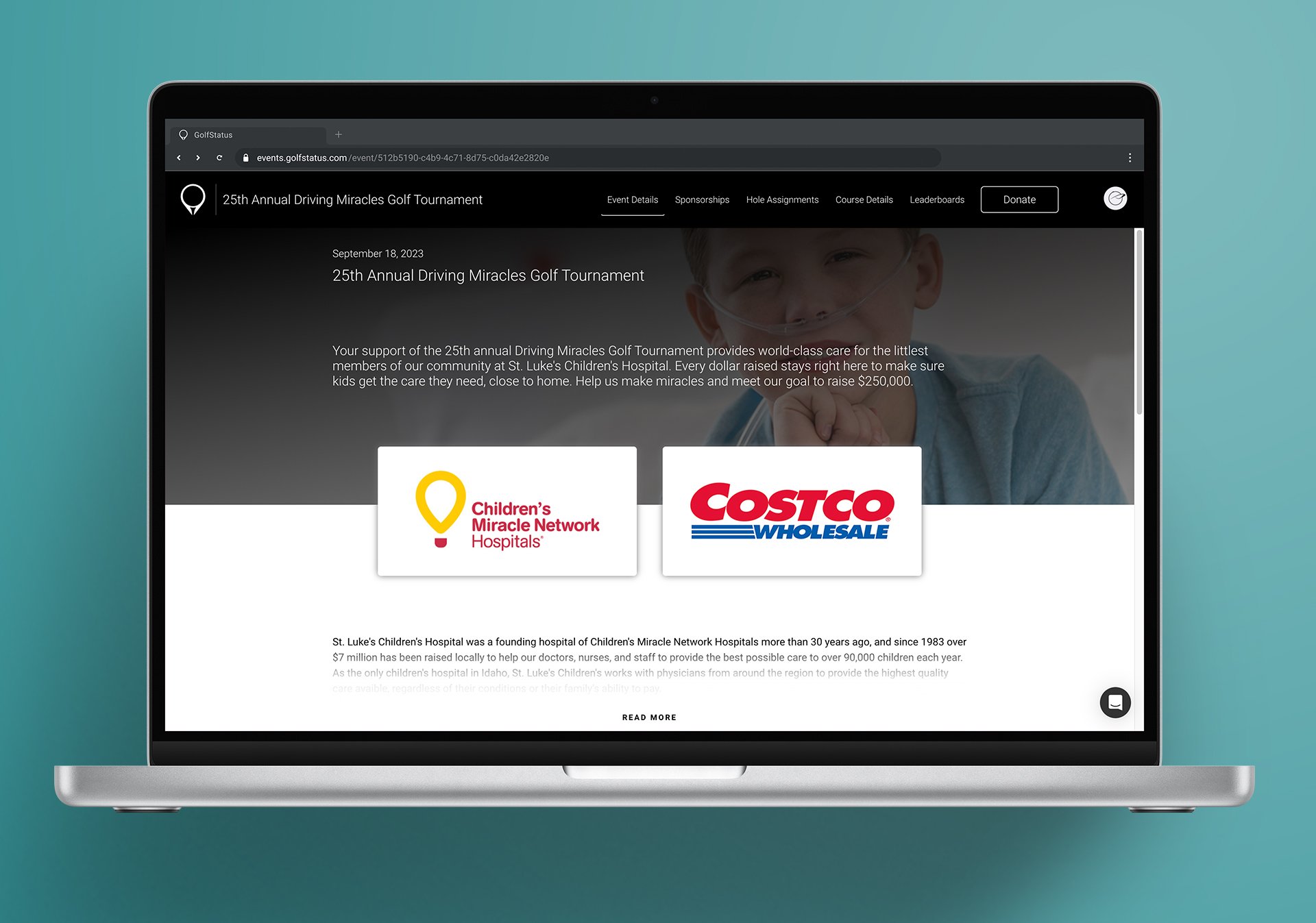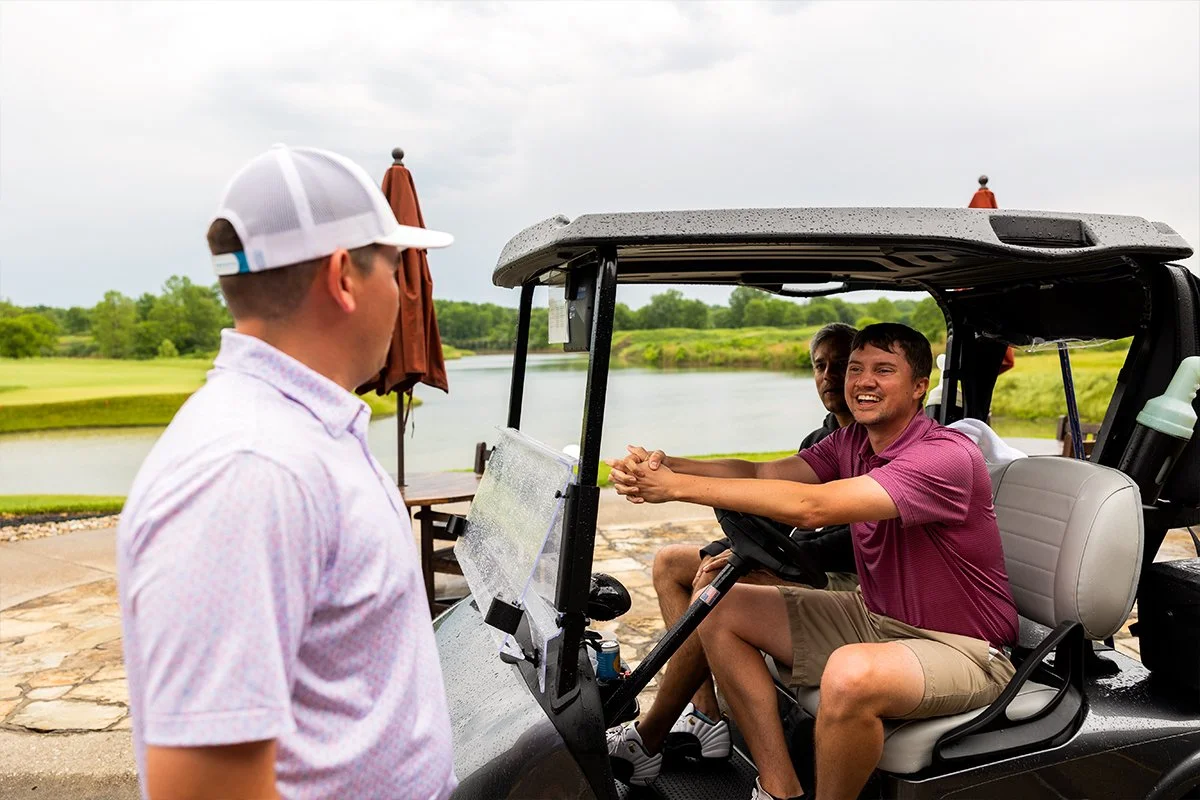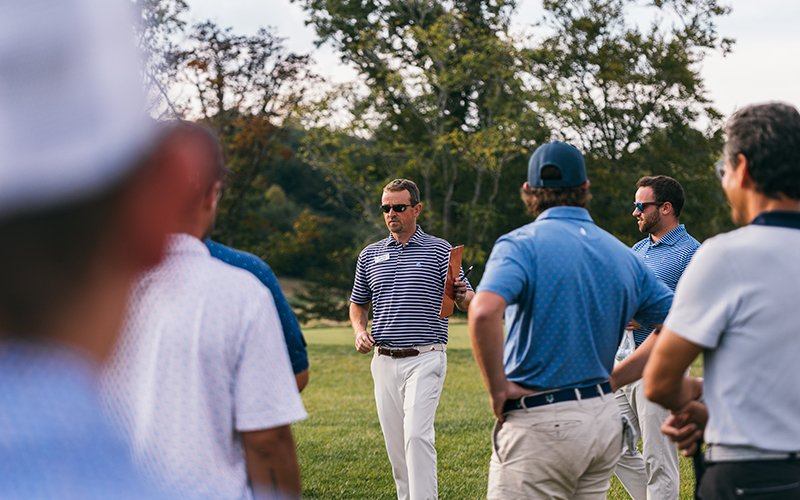Still looking for ideas to boost your golf tournament’s fundraising revenue? In this installment of the “golf tournament ideas that raise more money” blog series (check out the posts that focused on the pros at BackSwing Golf Events, hole-in-one contests, and in-kind donations), we’ll discuss how adding on-course games bring fun and fundraising to your tournament.
What is an on-course golf tournament game?
An on-course game is an addition to your tournament that involves an activity on one or more holes on the golf course that golfers pay to participate in. The games can have a variety of outcomes, like improving the team’s score, providing a better tee off location, removing an obstacle, winning a prize, or just to add an element of fun.
The Credit Unions for Kids Golf Classic adds extra fun to its tournament with on-course games, like kicking soccer balls onto an inflatable dartboard.
How Do on-course golf tournament games Work?
Games can be added to your tournament at any time, well in advance or right before the event. You can opt to have golfers pay to play when they register or pay the day of the tournament. Make sure you have an easy way to collect credit card payments in case golfers don’t carry cash. Your GolfStatus event website is a great option for this! An all-in games package is the easiest option—folks pay one flat fee to participate in all the games. Use wristbands or something similar to signal to the volunteers working the games on the course that those golfers have already paid.
Keep pace of play in mind when choosing the number of on-course games and their corresponding locations for your event. You don’t want teams piling up on a hole with a time-consuming game. Keep them easy to explain and quick to play to keep the round moving and golfers happy.
You’ll need to recruit volunteers to run each of the games. These can be staff or board members, other volunteers, or even sponsors. Depending on the length of the round, you might want to have two shifts of volunteers. They need to be comfortable explaining the rules and procedures, how to pay online via your event website, or collect cash payments.
how can we boost revenue with on-course golf tournament games?
Sell a games sponsorship! There are a few ways to structure a games sponsorship for your golf fundraiser. It’s up to you and what works best for your tournament!
Individual Games Sponsorships
Sell a sponsorship for each individual game on the course and encourage the purchasing business to run the game the day of the event. This gives them great brand exposure and ample opportunity to connect with golfers.
Overall Games Sponsorship
You might consider offering an overall games sponsorship that encompasses every game on the course. This sponsorship would sell for more than the individual game sponsorships and provide premium exposure for the sponsoring business.
Front & Back Nine Games Sponsorships
Alternatively, you could offer two separate games sponsorships, one for the front nine and one for the back nine.
What Are the Benefits of Having on-course golf tournament games?
Fun, fun, and more fun! Golfers of all skill levels can participate in on-course games and enjoy the extra entertainment.
You’ll raise more money. Games bring in additional revenue, whether you sell one or more game sponsorships or just rely on golfers paying to play.
They’re memorable. Golfers are guaranteed to remember the tournament where they shot the ball down the course with an air cannon or had to tee off or putt wearing Mickey Mouse gloves. Games add to a more enjoyable overall tournament experience.
Cause connection. Tying a game to your cause in some way helps golfers better understand and connect with what they’re helping raise money for.
Outlook Enrichment uses sleep shades for a blind putt hole to help golfers better understand vision loss.
What are some ideas for golf tournament games?
The possibilities are endless, so gather your planning team to brainstorm ideas. Reach out to the Pro at the host golf facility, who might also have ideas for games that have been popular at other tournaments. These ideas can help get you started.
Connect Golfers to Your Mission
Games that connect golfers to your mission in some way have double the impact—they get a deeper appreciation for your cause and are more likely to chip in addition money. For example, Outlook Enrichment, a nonprofit that serves the visually-impaired, had a blind putt hole to help golfers better understand the struggles of vision loss. Golfers wore a sleep shade and relied on their teammates to help them line up their shot through audio cues. If a team made it, they could replace any score from the tournament with a hole in one.
Another example is Habitat for Humanity of Columbus, which helps provide affordable housing and homeowner education, had a game on the practice green where golfers putted with building tools, like sledgehammers and levels, instead of their putters. They also had a hole where golfers teed off using work gloves, and golfers could pay to opt out if they didn’t want to chance the gloves affecting their shot and corresponding score.
Golfers at Habitat for Humanity of Columbus putted with building tools as part of a golf tournament game.
beat the pro
Groups like BackSwing Golf Events will send a pro to your golf event to engage golfers with contests like beat the pro, long drive pro, glass break challenge, and more—and raise a ton more money in the process. There’s no upfront charge to adding a BackSwing pro to your tournament, and they take care of all the logistics.
A spin on a beat the pro contest, if you’ve got a willing sponsor or other golfer, is a beat the amateur” contest. It could work like this: The amateur goes head-to-head with golfers on their tee shot; if the amateur hits it further, the money paid to participate becomes a donation. If the golfer wins, they get double their money back.
Golf ball cannon
Give golfers the chance to shoot their ball down the fairway using an air gun or golf ball cannon, instead of hitting a tee shot.
hole of fortune
Choose one hole that’s dubbed the “hole of fortune.” Golfers pick a card, play Plinko, or spin a wheel to determine the club they’ll use to tee off or play the entire hole with or the tee boxes they’ll start from. Prizes could also include an extra mulligan, an automatic hole-in-one, or a free drink. Alternatively, some slots or cards could result in something not as rewarding, such as teeing off while blindfolded or getting a penalty stroke.
Roll-a-score
Have golfers roll a set of dice and give them the option to replace any score from the event with whatever they rolled.
marshmallow drive
Have golfers tee off with a marshmallow. The golfer with the longest “drive” wins a prize. You could change this up to have golfers chip with a marshmallow, and the golfer with the closest chip to the hole gets the prize.
How Can We Level up Our Golf Tournament games?
On-course games definitely boost golfer engagement throughout the tournament, but if you’re looking for ways to supercharge that engagement, try these ideas that level up golf tournament games:
Leverage social media. Go live from one of the games, create a specific hashtag for a new game, and assign someone to share photos from each game throughout the tournament to get more people excited about participating in the games.
Hype it up. Ask a volunteer, a staff or board member, or recruit a local celebrity to announce or emcee a game to hype golfers up to participate (and make extra donations!).
Incorporate team-based challenges. Create ways for teams to compete against each other in the games. For example, if you use the marshmallow drive game, you can keep track of distance across all teams and award a special prize to the ultimate winner.
Use real-time leaderboards. When you use a software solution that provides hassle-free live-scoring, you can use real-time standings as part of your games. Perhaps teams that are under par at a certain game hole get a free extra wheel spin or Plinko drop, or teams that are more than a few strokes over par get an additional try at the marshmallow drive.
Take online payments. Whether you’re selling supertickets, wristbands, or individual game entries or collecting donations, the ability to collect payments online via your event website helps bring in more dollars and makes post-tournament accounting easier. Post a sign with a QR code that links directly to the packages page to make it super simple for golfers and your planning team, and you won’t have to deal with keeping track of cash payments.
Golf for Good
Nonprofits, charities, and third parties planning charity golf tournaments can get started with GolfStatus at no upfront cost through the Golf for Good program! Get access to GolfStatus’ golf event management platform—with a robust event website, time-saving automations and built-in fundraising tools, premium sponsorships, trusted partners, and an A+ in-house support team—to make your next golf event the best one yet. Click below to connect with our team!

